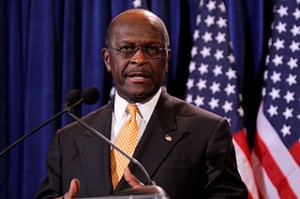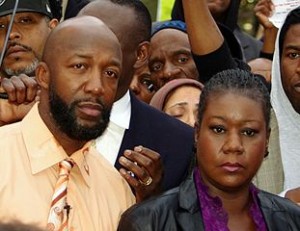
Herman Cain, former Republican presidential nominee (Gage Skidmore/Wikimedia Commons)
Twitter’s rapid-fire capabilities and its character limitations often make for regrettable outbursts and narrow-minded generalities, especially when it comes to race in media and politics. Eric Deggans at Poynter suggests that the medium limits — maybe even distorts — the discussion of such topics, especially when tempers heat up.
In one Tweet, Tim Graham of Newsbusters.org and Media Research Center wrote, “MSNBC touting Karen Finney as another African-American host. Would the average viewer be able to guess that? Or is Boehner a shade more tan?” For Deggans, the comment smacked of an old school notion of diversity in the newsroom and “whether a media outlet will ‘get credit’ for a person of color who doesn’t resemble what some expect black and brown people to look like.”
In another Tweet, the deeply conservative musician Charlie Daniels wrote, “Funny how if you say something against Herman Cain you’re a genius If you say something against Barack Obama you’re a racist.” Deggans’ take was that the comment implies all black politicians are the same, regardless of political record.
The foot-in-mouth virus of Twitter is probably not surprising to many of its users, though. One commenter even responded:
“I understand your frustration at the reactions to your tweets, but that does not explain how Twitter was limited in this circumstance. The only thing I read is that you received a deluge of responses from Mr. Grahams followers. I have often seen this happen in comment sections to stories, so I don’t think it is something unique to twitter.”









